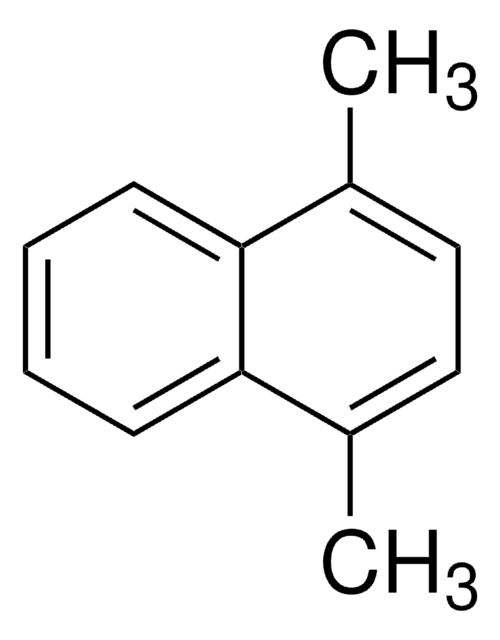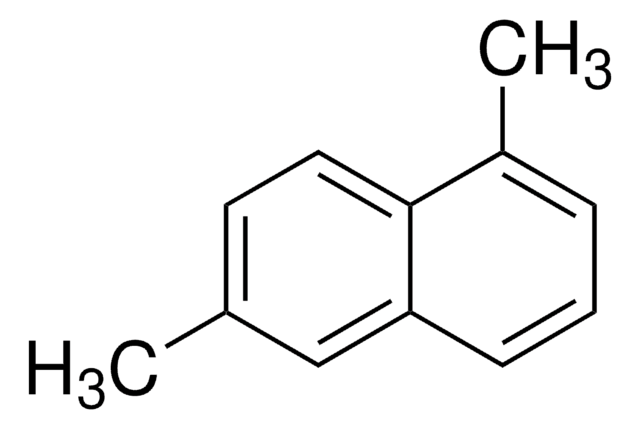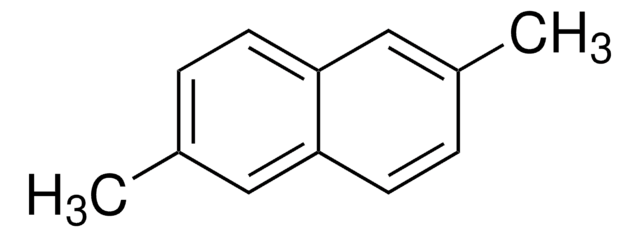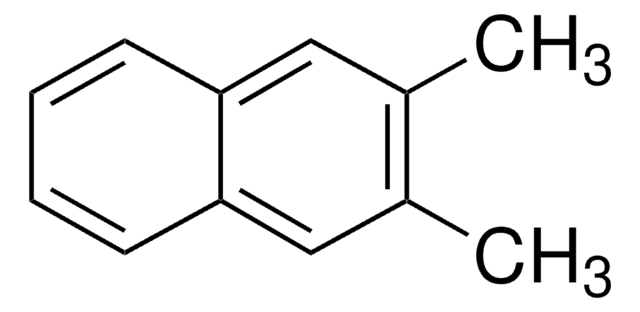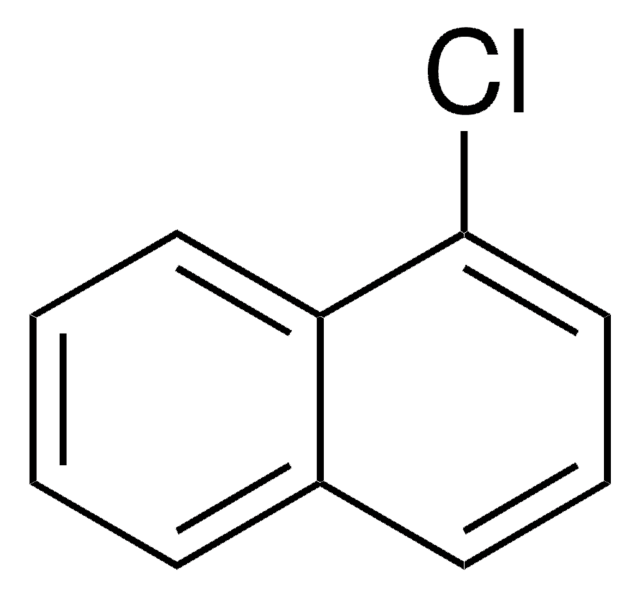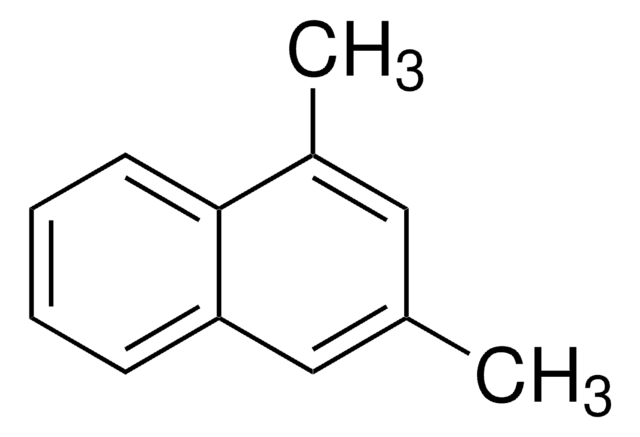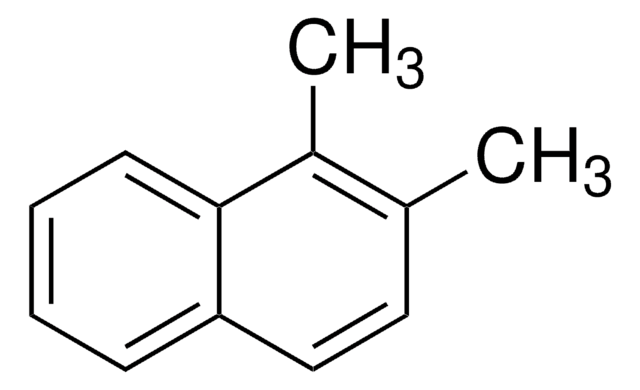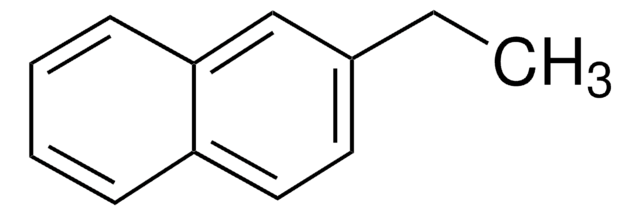All Photos(1)
About This Item
Linear Formula:
C10H6(CH3)2
CAS Number:
Molecular Weight:
156.22
Beilstein:
2039841
EC Number:
MDL number:
UNSPSC Code:
12352100
PubChem Substance ID:
Recommended Products
Assay
95%
form
solid
bp
270 °C (lit.)
mp
59-61 °C (lit.)
SMILES string
Cc1cccc2cccc(C)c12
InChI
1S/C12H12/c1-9-5-3-7-11-8-4-6-10(2)12(9)11/h3-8H,1-2H3
InChI key
XAABPYINPXYOLM-UHFFFAOYSA-N
Looking for similar products? Visit Product Comparison Guide
General description
Mechanism of NO(2)(+) nitration of 1,8-dimethylnaphthalene has beeen investigated. Photolysis of the 1,8-dimethylnaphthalene/tetranitromethane charge-transfer complex affords the triad of 1,8-dimethylnaphthalene radical cation, nitrogen dioxide and trinitromethanide ion.
Application
1,8-Dimethylnaphthalene has been used in the preparation of 1,4-endoperoxides via dyesensitized photo-oxygenation reaction.
Storage Class Code
11 - Combustible Solids
WGK
WGK 3
Flash Point(F)
Not applicable
Flash Point(C)
Not applicable
Personal Protective Equipment
dust mask type N95 (US), Eyeshields, Gloves
Choose from one of the most recent versions:
Already Own This Product?
Find documentation for the products that you have recently purchased in the Document Library.
Tanaka et al.
The Journal of organic chemistry, 65(10), 2972-2978 (2000-05-18)
The nitration of methylnaphthalenes with NO(2)BF(4) and NOBF(4) was examined in order to shed light on the controversial aromatic nitration mechanism, electrophilic vs charge-transfer process. The NO(2)(+) nitration of 1,8-dimethylnaphthalene showed a drastic regioselectivity change depending on the reaction temperature
Photochemical Nitration by Tetranitromethane. XVI. The Regiochemistry of Adduct Formation in the Photochemical Reaction of 1, 8-Dimethylnaphthalene and Tetranitromethane; Thermal 1, 3-Dipolar Nitro Addition Reactions.
Calvert Jl, et al.
Australian Journal of Chemistry, 47(7), 1211-1222 (1994)
Formation of 1, 4-endoperoxides from the dye-sensitized photo-oxygenation of alkyl-naphthalenes.
Wasserman HH and Larsen DL.
Journal of the Chemical Society. Chemical Communications, 5, 253-254 (1972)
Nien-Hsin Kao et al.
Marine pollution bulletin, 97(1-2), 319-332 (2015-06-08)
Three fishing harbors were investigated to study the polycyclic aromatic hydrocarbons in the sediments and trace possible anthropogenic sources by identification of cyclic terpenoid biomarkers. Seventeen terpanes, 10 steranes and 10 bicyclic sesquiterpanes in the marine diesel and the three
Our team of scientists has experience in all areas of research including Life Science, Material Science, Chemical Synthesis, Chromatography, Analytical and many others.
Contact Technical Service
